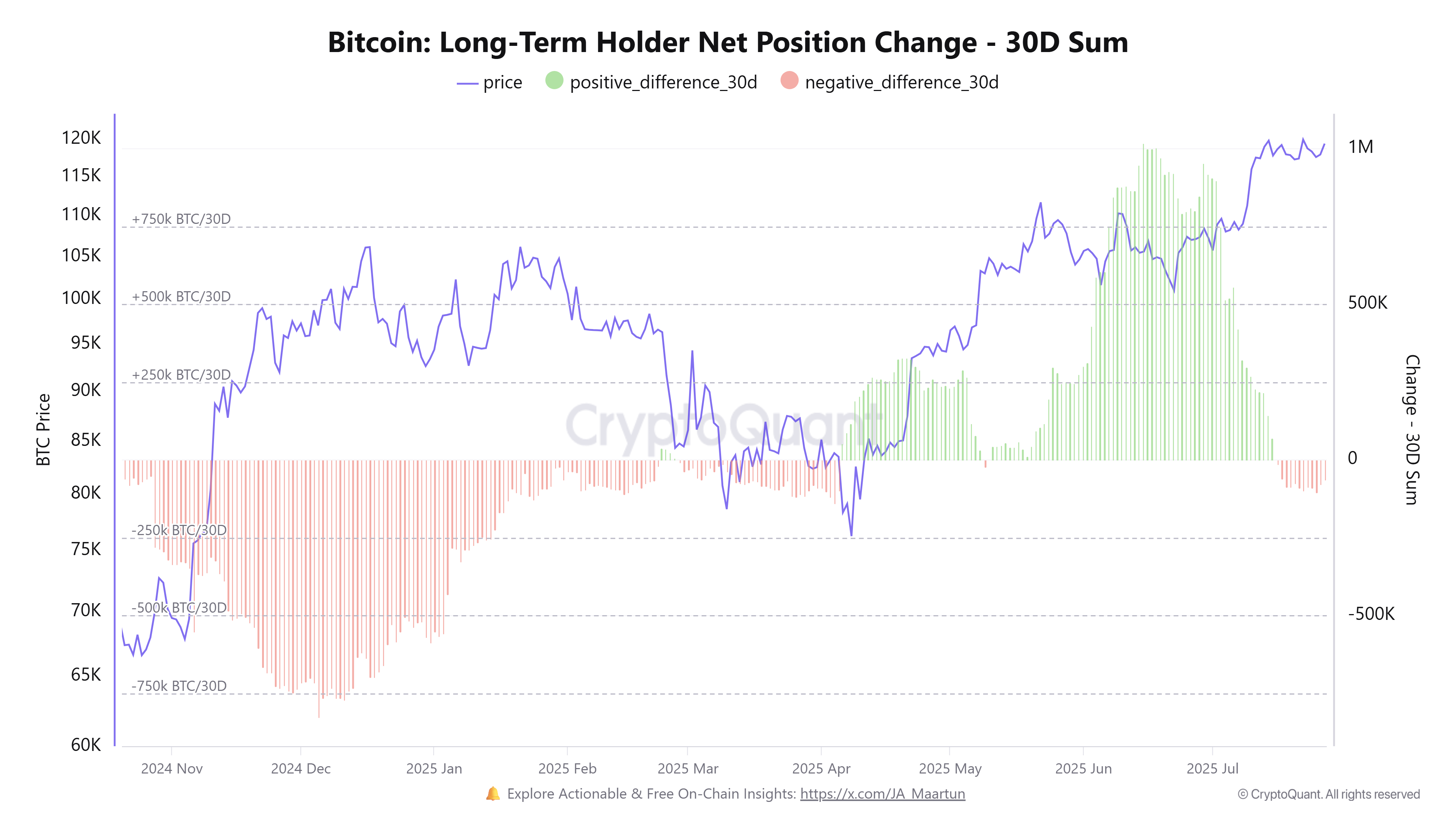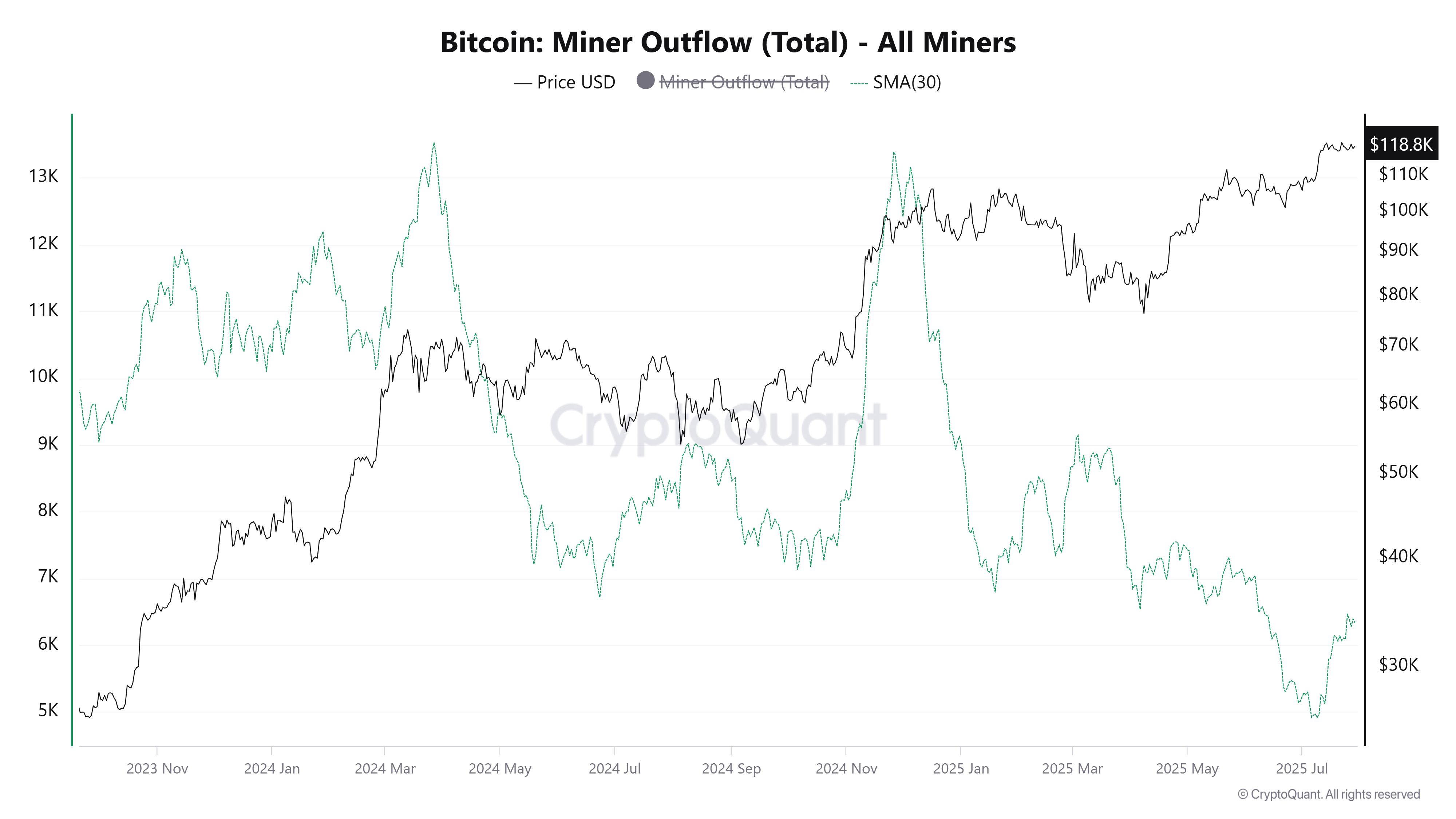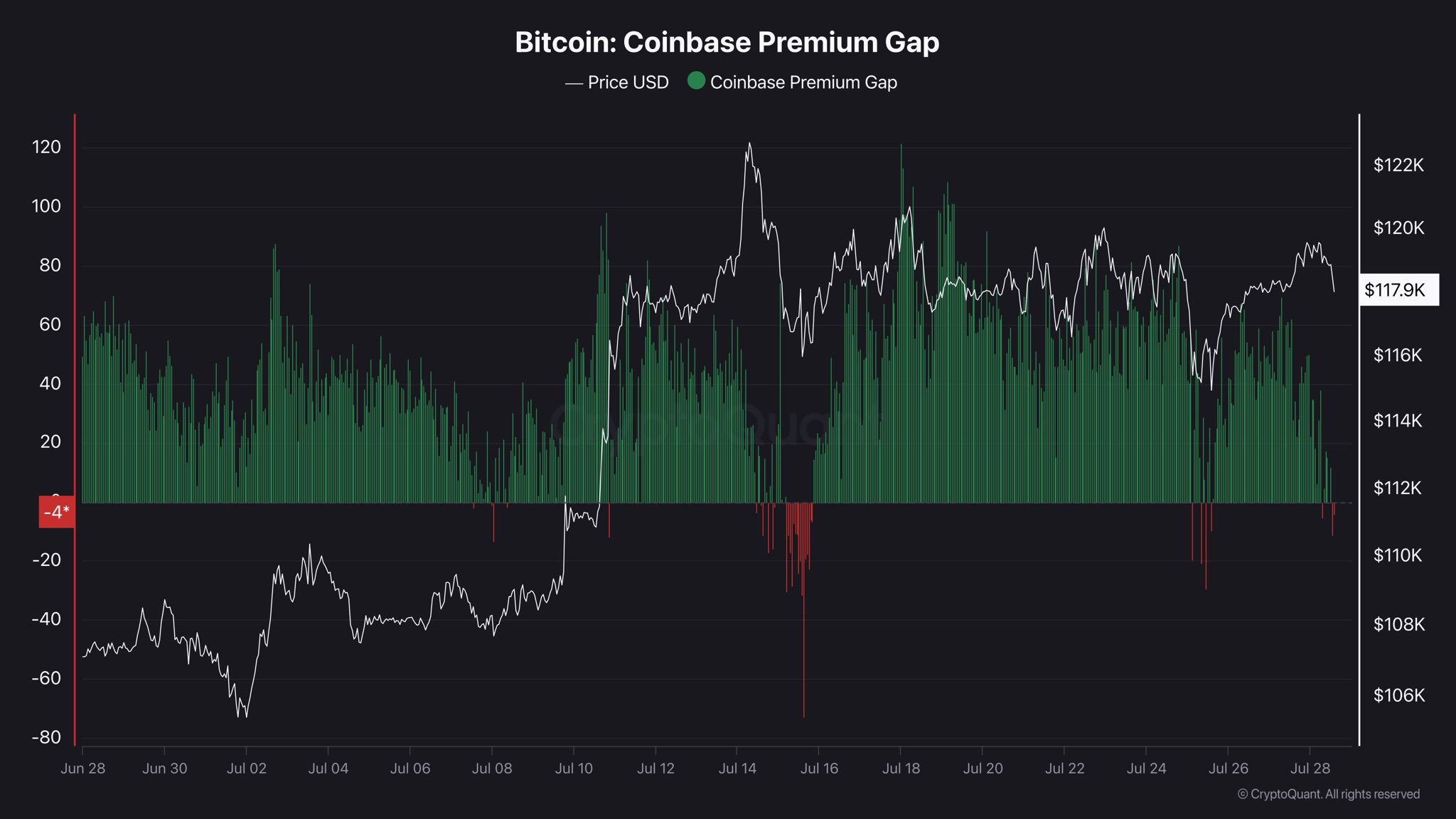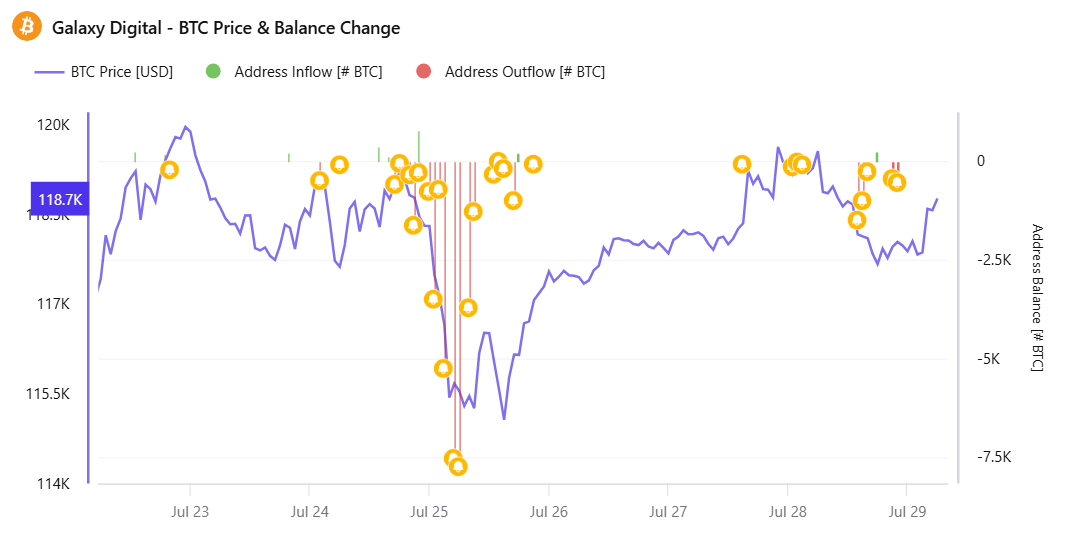As July comes to an end, several significant developments in the Bitcoin (BTC) market have emerged. Notably, profit-taking pressure has resurfaced in the final week of the month, raising concerns about a potential turning point in August.
Based on analysis from market experts and on-chain data, four main sources of selling pressure could soon shape Bitcoin’s trajectory. Let’s explore each factor in detail.
1. Profit-Taking from Reawakened “Dormant Whale” Wallets
At the beginning of July, BeInCrypto reported that a whale wallet holding 80,000 BTC woke up after more than 14 years. The sell-off activity from this whale wallet, facilitated by Galaxy Digital, slowed Bitcoin’s upward momentum in the last week of July.
CryptoQuant data shows that large outflows from Galaxy Digital wallets often coincide with Bitcoin price corrections. On July 29, LookonChain continued to detect more outflows, sparking fears of another sell-off.
“Is Galaxy Digital helping clients sell BTC again? In the past 12 hours, Galaxy Digital has transferred out another 3,782 BTC ($447 million), most of which went to exchanges,” LookonChain reported.
Moreover, BeInCrypto reported that two additional dormant wallets—inactive for 6 to 14 years—have become active. SpotOnChain recently reported three dormant whale wallets, possibly tied to a single entity, that moved 10,606 BTC ($1.26 billion) after 3–5 years of inactivity.
An increasing number of awakened whale wallets appear to add selling pressure heading into August.
2. Signs of Selling Pressure from Long-Term Holders
The second source of selling pressure is from Long-Term Holders (LTHs), who are often considered the backbone of the Bitcoin market.
According to a CryptoQuant report, LTHs began withdrawing funds as BTC hovered around the $120,000 mark at the end of July. This behavior may reflect a cautious mindset, where many investors prefer to lock in profits rather than continue holding through potential volatility.

“Long-term holders (LTHs) have started to turn net negative right at the $120K resistance — a historically important psychological level. This shift suggests that some investors who’ve held through previous cycles might be starting to realize profits,” analyst Burakkesmeci noted.
In Q1 2025, negative net positions from long-term holders helped drag BTC below $75,000. If this group continues to sell, it could create significant selling pressure, increasing the risk of a strong correction in August.
3. Miner Outflows Are Increasing
The third factor is rising miner outflows — a key indicator of selling pressure from Bitcoin miners.
CryptoQuant data shows that throughout July, BTC outflows from miner wallets started climbing again after a period of decline. This shift marks a possible trend reversal.
Miners often sell when they need liquidity to cover operational costs or when they want to lock in profits after a price rally. If this trend continues, it could amplify selling pressure, especially when combined with the activity from whales and long-term holders.

“The mean amount of coins per transaction sent from affiliated miners’ wallets. If miners send some proportion of their reserves at the same time, it could trigger a price drop,” CryptoQuant explained.
4. Selling Pressure from the US Investors
The Coinbase Premium indicator reflects the price gap between Coinbase and Binance. A negative premium means Bitcoin trades at a lower price on Coinbase, indicating weaker demand or stronger selling pressure in the US market.
This indicator essentially represents the behavior of US investors. Although it remained mostly positive, it turned negative at the end of July.

“Bitcoin Coinbase Premium Gap turned negative again. What does it mean? The demand in the US market is weakening. Caution is necessary,” analyst IT Tech commented.
Historically, a negative premium hasn’t always led to a trend reversal. However, it often signals a slowdown in upward momentum. If selling pressure continues to build, a negative outcome could unfold.
A Reversal Signal from the MVRV Ratio in August
Some analysts are adopting a more cautious stance for August, especially after Bitcoin recorded four straight months of gains.
According to Coinglass statistics, Q3 is historically the weakest quarter of the year. August, in particular, is often the worst-performing month within Q3.
CryptoQuant analyst Yonsei pointed out that the MVRV (Market Value to Realized Value) ratio is approaching a cycle-top threshold. This signal may appear by late August.

During the 2021 cycle, the MVRV ratio formed a double top that accurately predicted the market peak. If history repeats, August could mark Bitcoin’s local top before entering a correction or consolidation phase.
“In short, we’re entering a zone where optimism and caution must coexist. Let on-chain timing guide your strategy — now is the time to tighten risk management and stay nimble,” Yonsei concluded.
Despite these concerns, Kaiko’s latest report expressed confidence in Bitcoin’s market depth. They believe the market can absorb the current selling pressure.
“However, the strong liquidity profile, matched with the market’s ability to handle large orders and growing demand from treasury companies, indicates the presence of sophisticated traders. These traders are more price agnostic, which should bode well for BTC’s price action heading into what can be a choppy month,” Kaiko stated.
Although whales, LTHs, and miners may trigger volatility, the current market structure could prevent a severe collapse.
The post 4 Entities That Could Trigger a Bitcoin Sell-Off in August appeared first on BeInCrypto.
